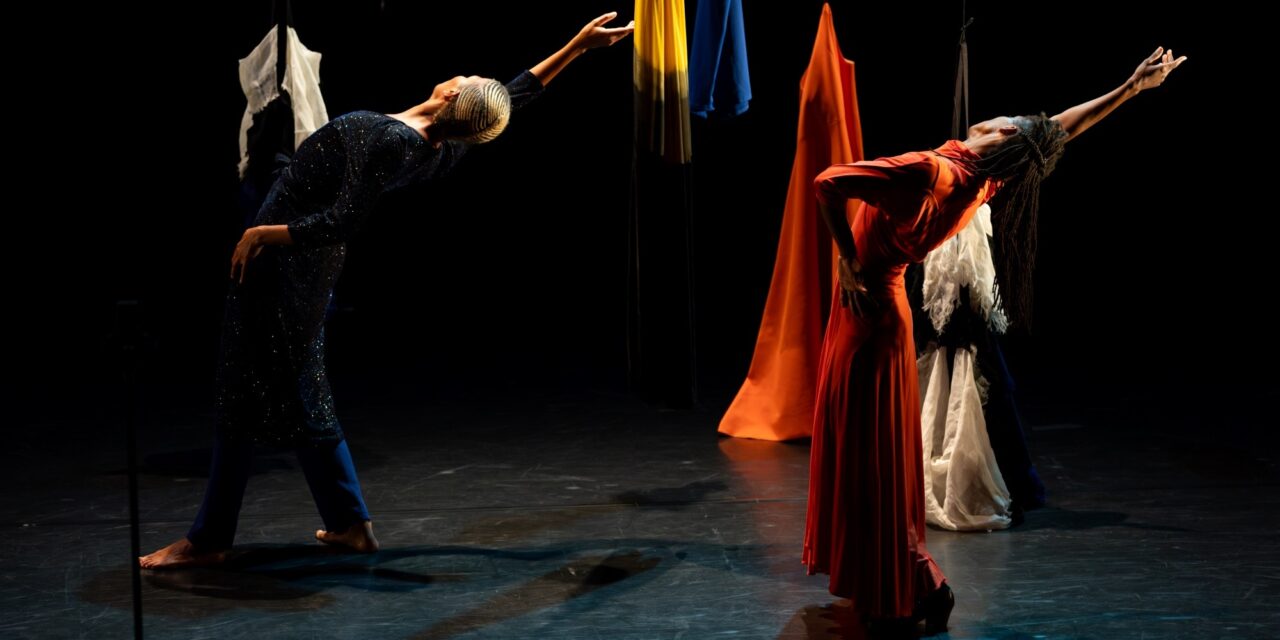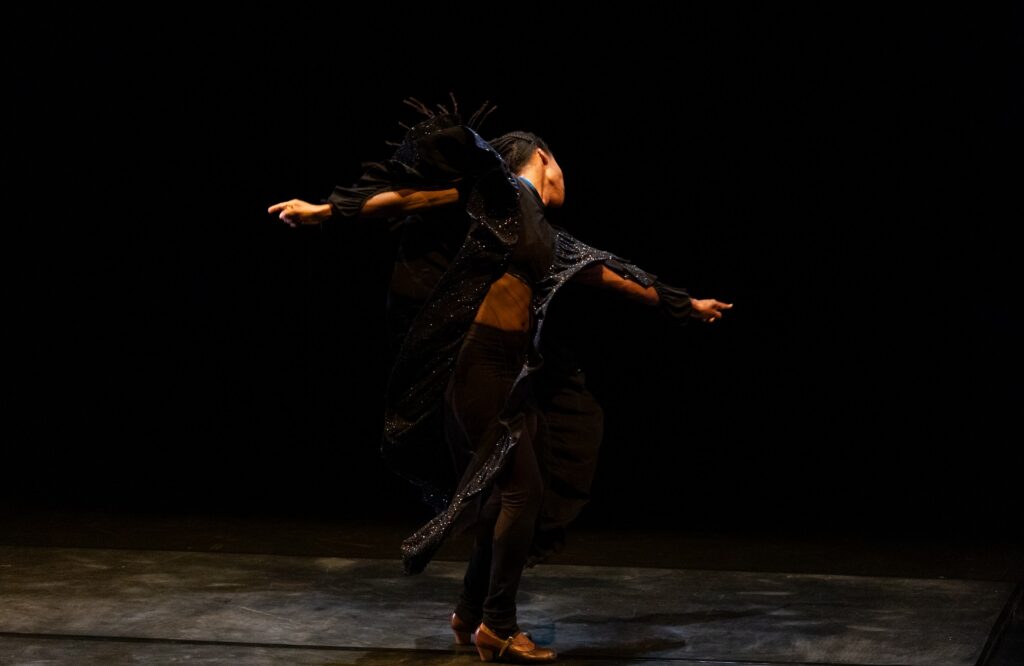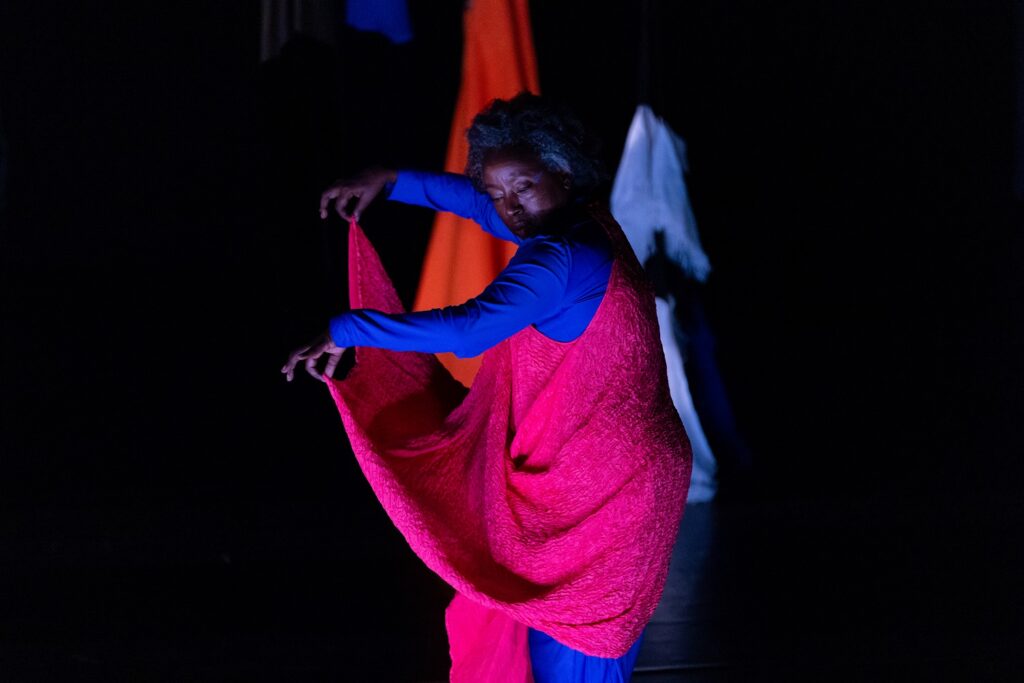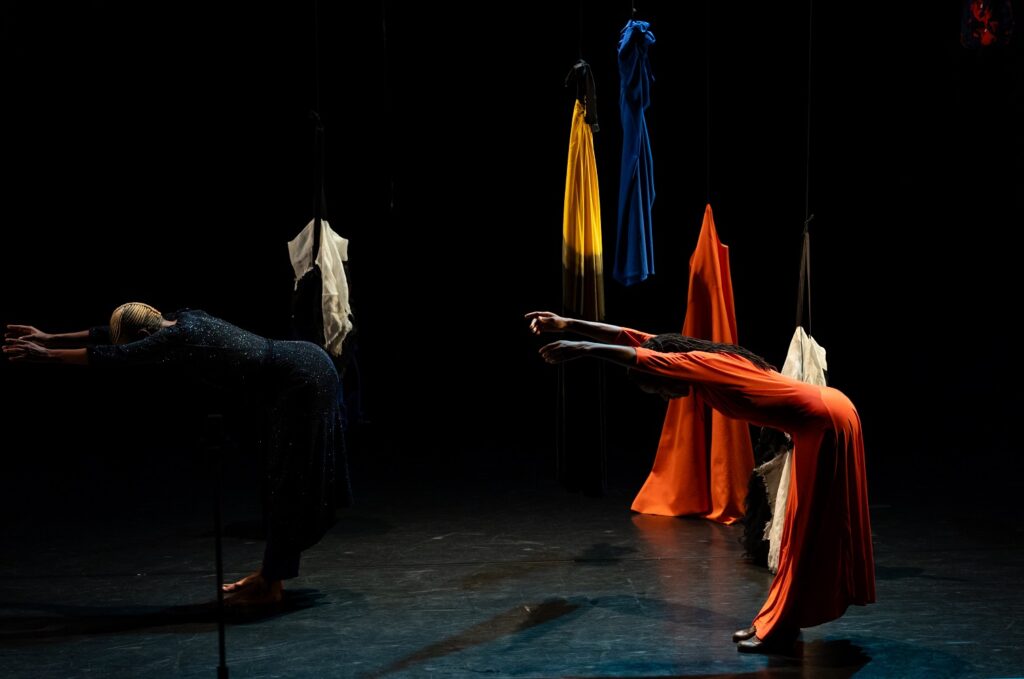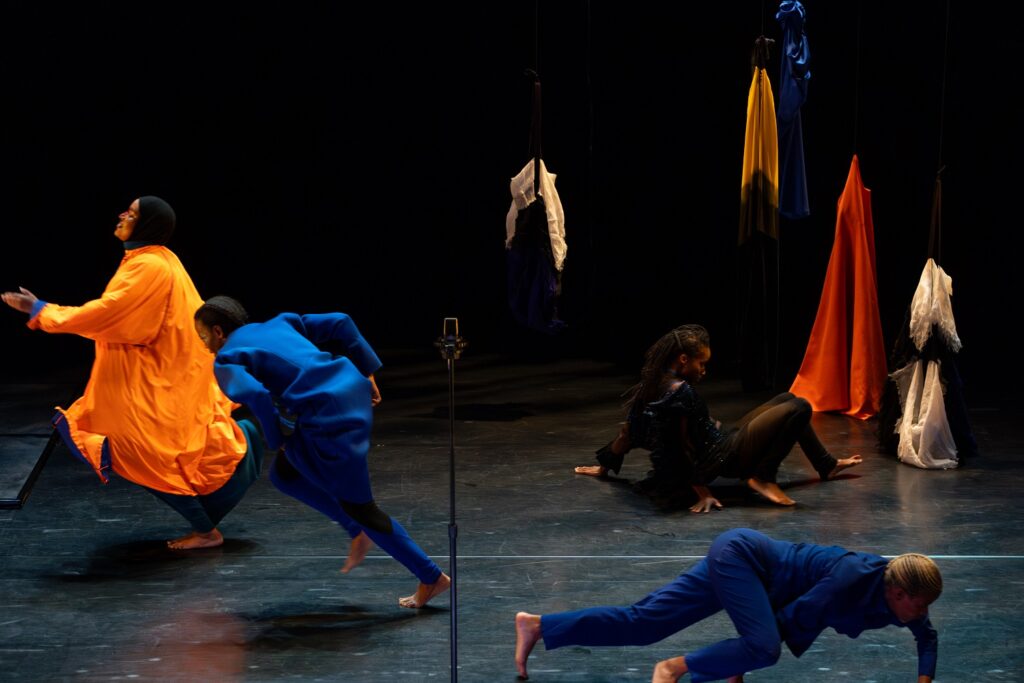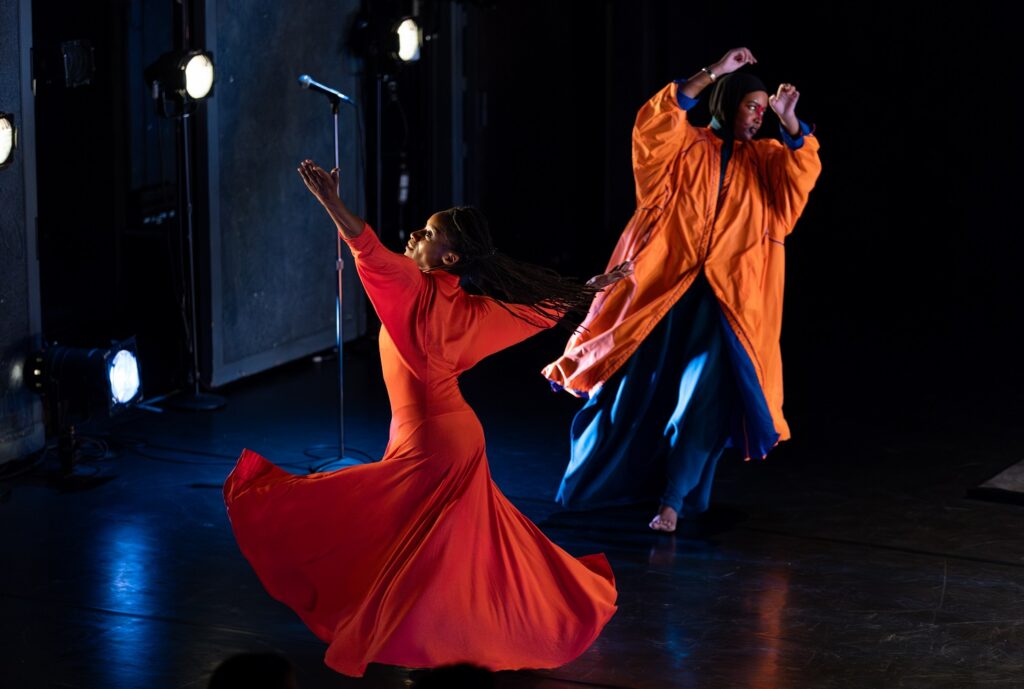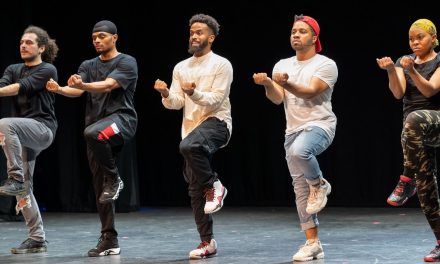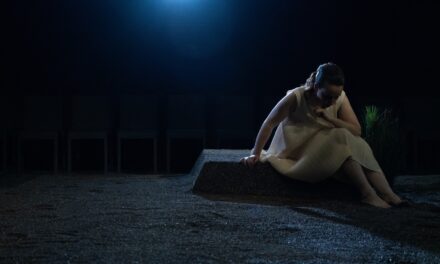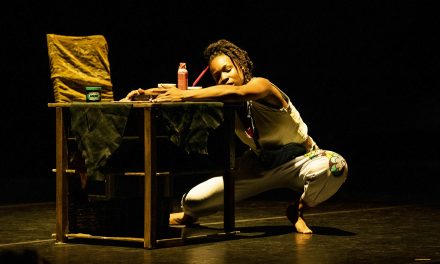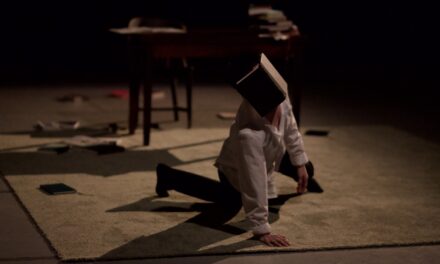Billed as a symphony for five African and Afro-descendant female and non-binary voices, renowned choreographer, singer, and author Dorothée Munyaneza’s MAILLES strives to weave together stories about feminine bodily freedom, violence, and female history. The piece uses music, song, text and movement as the driving, dynamic forces. The work is more of a performance art piece with unconventional staging, as opposed to a classical dance performance. It attempts to explore and celebrate the black female driving forces in art and life. MAILLES is presented in multiple languages including French, Kinyarwanda and Swahili song and monologues, with English surtitles occasionally projected on a suspended screen. Munyaneza says she draws her artistic voice from real stories, inspired by her life, her cultural heritage and multi-national life experiences, growing up in Rwanda, London, Paris and eventually settling in Marseille, France.
Opening on a bare dimly lit black stage, with a half-dozen suspended colorful garments on the right side of the stage, a lone woman in dark over garments rings a small bell held in her hand. She is eventually joined by four other women also ringing bells. They traverse the stage in darkness, sporadically swinging their arms wildly. As they begin to move in unison, the light isolates the women in their own segment of stage space. They soon exit, leaving one performer in a black sparkled body suit tapping flamenco steps, unaccompanied by any music until exhausted she exits the stage, as the lights fade to black.
Immediately, another woman in a blue burka enters and begins a spoken monologue parable in a foreign language as surtitles appear on the hanging screen toward the back of the stage projecting her words in English. A woman jogs around her while another pair stand by two microphones singing African chants a cappella.
A solo saxophone sputtering disconnected notes contradicted a monotone monologue of another woman, speaking about her history of where she lived, added another layer of more spastic, unintentional movements and poses. Bouncing between different modalities, one segment felt to express happiness, as the women smiled and bounced around each other to sounds of a trumpet blurting 16th notes and scales, as another performer told the story of a mother speaking to her children.
Each additional “segment” of the evening segued into seemingly unconnected moments. There were moments of traditional Rwandan dances interspersed with intermittent Flamenco, modern movement, stretching and floor writhing, appearing almost spasmodic and seizure-like at times. Slow motion exaggerated walking, floor sliding, and odd jerky unnatural positions contradicted the bellringing, whistling and arhythmic sound effects. There were long passages of spoken word translated on the screen, stories ranging from violent tales to personal histories and fables.
The last section of the evening opened with a drop out of sound as a woman in a white dress carried another white dress in her arms. The other performers joined her on the stage, writhing torturously on the floor or bouncing and beating on metal bells. One woman began speaking gibberish and the sound was echoed louder and louder, escalating to a deafening piercing noise that felt like an exorcism. Eventually, the pandemonium stopped and the woman in the white dress laid the other dress on the floor. As the lights slowly faded, there was a long silence.
Along with Dorothée Munyaneza, the four additional performers and fellow artistic choreographic collaborators were: Asmaa Jama, a Somali multidisciplinary artist, writer and filmmaker; Yinka Esi Graves, a British Flamenco dancer, practitioner and educator; Ife Day, a visual artist and performer; and Nido Uwera, a choreographer and dancer.
Stéphanie Coudert was Munyaneza’s main artistic collaborator, “suspended” scenographer, designer and visual artist. Lighting Designer Christian Dubet rarely ventured from fading up and down with white light throughout out the piece, highlighting the various performers as they joined the action. The music by Alain Mahé, Ben Lamar Gay, Alex Inglizian and Munyaneza was sparse, unmelodic, non-rhythmic, and built to a cacophony that was difficult to listen to because of the volume and irregular sound combinations.
As a big fan of performance art and its myriad of artistic perspectives, many times I was not sure what was going on. At one point, my smart watch alerted me that the sound decibels were too high and could be dangerous. I left feeling that I did not grasp the purpose and intention of the evening. I respect the undertaking and work of all the artists, but the work’s meaning was not well executed or communicated. I do hope this piece made a difference to someone, and that Munyaneza continues to explore her unique voice for an audience that may grasp her vision better than I.
To learn more about REDCAT’s performance lineup, please visit their website.
Written by Anthony Marciona for LA Dance Chronicle.
Featured image: MAILLES by Dorothée Munyaneza – Photo by Angel Origgi

